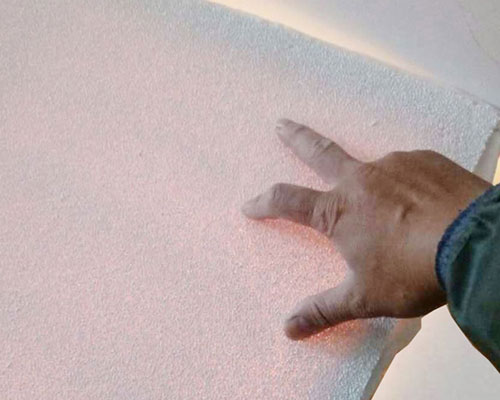The Alu casting filter can effectively remove the inclusions in the aluminum melt and significantly improve the quality of aluminum products. Due to the oxygen affinity of aluminum, oxide is the most common inclusion in all aluminum alloy melts. In the modern aluminum casting industry, in the process of producing aluminum products, foundry ceramic foam filter can effectively remove the alumina impurities in the aluminum solution and improve the quality of aluminum products.
If the chemical composition of non-metallic inclusions formed in the aluminum melt is not removed, the chemical composition is very stable, and cracks are easily produced in the casting after solidification. The existence of non-metallic inclusions makes the mechanical properties of castings difficult to predict. The influence of oxide inclusions on the tensile properties of aluminum alloy is considered to be the main reason for the decline of mechanical properties of aluminum alloy. Therefore, it is very necessary for aluminum companies to use Alu casting filter.
Ceramic foam filter CFF is widely used in the production of large aluminum processing enterprises in Russia, Middle East and Southeast Asia. In the process of using, not only the inclusions in the aluminum melt should be removed, but also the blocking of ceramic filter should be avoided, and the service life of CFF should be improved.

Filtration Principle of Alu Casting Filter
Ceramic filter foundry is a new porous ceramic filter that is made of an industrial sponge as the carrier, filled with heat-resistant ceramics and then sintered. When ceramic filter plate filters aluminum, aluminum flows through the tortuous hole of the ceramic filter. The nonmetallic impurities and oxide film in the aluminum solution are affected by axial pressure, friction and surface adsorption of aluminum liquid. The comprehensive action of slag is trapped on the inner surface of the hole and gap of the ceramic filter, which makes slag and aluminum liquid separate.
After a period of filtration, slag left on the casting filter also participates in the adsorption of slag, which plays a role in filtration. Because the slag adsorbed on ceramic filter plate has the same performance as that of aluminum liquid, its surface area ratio is much larger than that of ceramic filter plate and the surface activity is much greater than that of aluminum. Ceramic filter plate, therefore, the adsorption and capture capacity of slag in aluminum solution is much greater than that of ceramic filter plate.
Because of this, ceramic filter plate can filter out many times smaller than its own hole. During the filtration process, the slag adsorbed on the ceramic filter plate grows up gradually after adsorbing the slag in the liquid aluminum. Under the agitation and scour of liquid flow, extremely low strength slag may break or fall off the ceramic filter plate. In the process of slag falling, if the ceramic filter plate is thick or has holes, it may be intercepted or adsorbed again.

